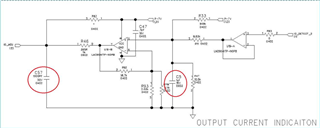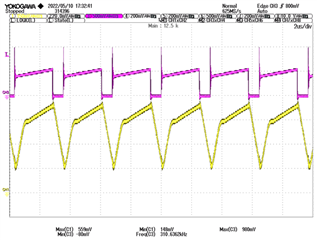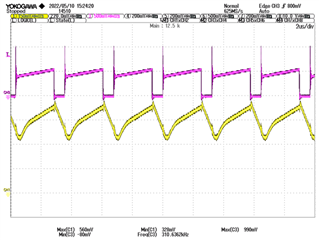Dear Expert
from the measurement, we can confirm this issue was related to the TI chip, we need TI to investigate the difference between different 15TI and 22C5
Below is the measurement result of different D/C by DMM. we can found that the input(pin3) of U19 is almost same, but the output is different(pin1) of U19.
|
U19 |
15 TI |
22 C5 |
|
V(Pin1-GND) |
0.46629V |
0.43086V |
|
V(Pin3-GND) |
0.36785V |
0.36873V |
|
V(Pin5-GND) |
0.27284V |
0.25796 |
|
V(Pin6-GND) |
0.27775V |
0.25682V |
|
V(Pin7-GND) |
3.7671V |
3.5264V |
|
Pass/Fail? |
Pass |
Fail |

Measure the signal by oscillator, can found the output(pin1) of U19 is different.
|
|
Mark :22 C5 |
Mark :15 TI |
|
CH3: pink U19-pin3
Ch1:Yellow U19-pin1 |
 |
 |


